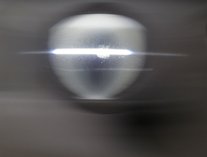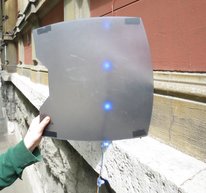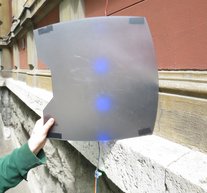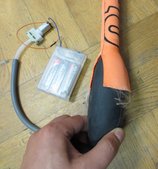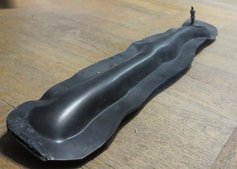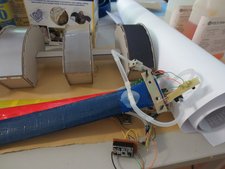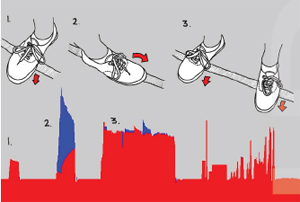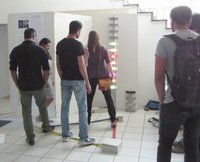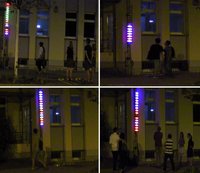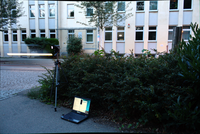The digital design of public spaces is still a difficult task. In particular when developing novel interaction scenarios, an early and iterative deployment in the field is necessary so that system design can take account of the real-world conditions of the public environment.
The project developed a new wireless input- and output-module which can be freely distribute in urban space. The battery driven wireless devices work over a distance of up to 20 meters. The thereby instrumented space creates a platform to experiment. In particular focusing on social interactions between people.
Material Research
As the prototypes for the outdoor scenarios are custom made, some research into appropriate materials was needed. The pictures show experiments for the two main concerns for the modules: Light diffusion and visibility at almost daylight. Second, robust designs.
Interface design prototyping
Public installations require new multi-user interfaces to promote co-experiences within groups. The pictures exemplify the search for new interfaces, which are robust and easy to deploy at the same time. This time we focussed on pressurized interfaces. Sheets of rubber were glued together and connected to an air pump and a pressure sensor. This closed loop system not only allow a robust design but a great co-awareness through the physicality of the inflated material.
The method of construction allows to create a large potential interaction space at low cost. Three preassure pads of 1.3m each were used fo rthe final installation.
Interaction Design
From the beginning the system was thought as a multi-user installation. In addition to that, one footed, two and multifooted interaction techniques were explored. This was done to understand impact of form, sensor and actuator on each other.
In-situ testing
Finally the prototype was tested in the wild. Students evaluated how good it performs in comparisson to the interactive fountain at Herderplaz. For that a notation scheme was developed to note down observation in the field in a systematic way.
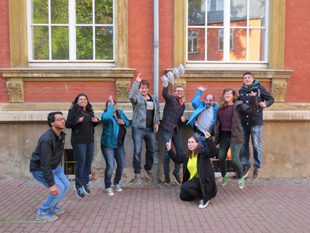
Weiterführende Links:
Wiki
Projektteilnehmer:
Umar Akram (M.Sc. HCI)
Emir Genc (M.Sc. MediaArchitecture)
Revathi Gurumoorthi (M.Sc. HCI)
Vanessa von Jan (B.Sc. Medieninformatik)
Afroditi Manari (M.Sc. MediaArchitecture)
Preetha Moorthy (M.Sc. HCI)
Kevin Schminnes (B.Sc. Medieninformatik)
Betreut durch:
Prof. Dr. Eva Hornecker
Dr. Patrick Tobias Fischer

